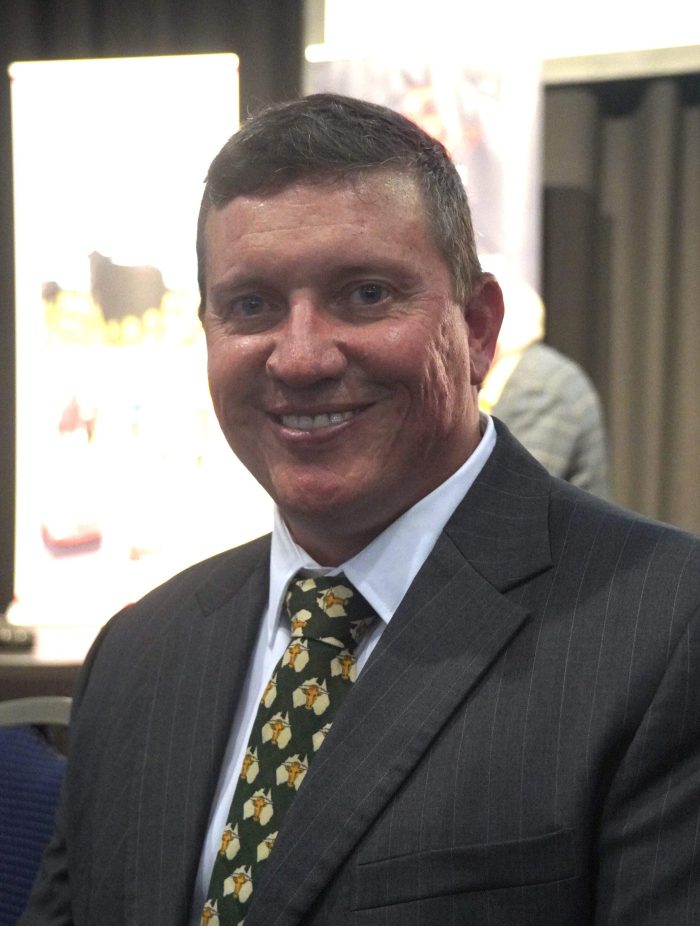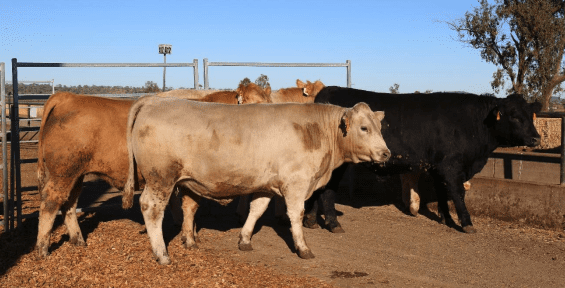THE dramatic differences in feedlot performance between elite cattle involved in this year’s RNA Paddock-to-Palate grainfed performance competitions, and everyday cattle being handled by export processors was highlighted during last week’s awards presentation dinner in Brisbane.
Despite atrocious feeding conditions over autumn and winter due to wet weather, the best of the feedlot weightgain performers this year in both 70 and 100-day competitions produced gains of 3kg and even 3.5kg/day in the JBS Beef City feedlot pens. Measure that against an industry average of around 2.2kg/day on 100-day cattle, when using baseline full-to-full weights.

JBS Northern division commercial manager Brendan Tatt
JBS Northern division commercial manager Brendan Tatt issued a challenge to the gathering of industry stakeholders attending last week’s awards presentation: “Let’s strive to make the ‘extraordinary’, ‘ordinary’,” he said.
“Events like this highlight the possibilities that are out there. We’ll never get everyday cattle to perform as well as these have, but there is clearly scope for further improvement.
“The fact is, that this high performance exists, and the results continue to trend higher, year-on-year,” he said.
“We see it in these type of competitions, year-in, year-out. While a lot of the competitors in the Paddock to Palate competitions were seedstock producers, those cattle are available to everyone else in the industry.
“We need to take the blinkers off and work harder to spread out those high performing genetics more widely through the beef herd,” Mr Tatt said.
Asked how much of this year’s elite performers’ results were due to genetics, versus feeding or animal health management, he said the Paddock to Palate competition could not be more commercial in the way it was run.
“The Beef City pens used for the competition are side-by-side with pens holding everyday cattle, receiving exactly the same ration and management,” he said.
“We treat the competition cattle no differently. For us, it’s very realistic, providing a really good benchmark on exactly what’s possible.”
Droughts, and flooding rains
“And this year’s competition entries had a tough time of it – born and weaned into a severe drought (2019-20), before being fed during the wettest autumn/winter we’ve seen at Beef City in at least 20 years – maybe for ever. At one point they had 150-200mm on them in a week, and pens were never given the chance to dry out, with repeat rain.”
Yet those cattle fed well right through the 105-day period, with exceptional weightgain performance, and very few animal health issues.
”Setting cattle up right with pre-vaccination for respiratory obviously helps, as does some pre-feeding education. But clearly, the performance outliers clearly exist in our industry, and we need to try to replicate that more often,” Mr Tatt said.

Palgrove Charolais x Ultrablack steers that won a historic trifecta in the Paddock to Palata competition – the weight gain section, the carcase section and overall championship in a single class in a single year in in the 100-day HGP export class.
“The lotfeeding operations are no different than any other part of the JBS meat business. It’s about efficiency (targeting more growth for less inputs, through feed conversion efficiency), and daily gain (in turning those animals off at an optimal market weight, but quicker, and with better marbling).
Asked whether, given methane emissions and other emerging challenges, the Australian industry generally was yet putting enough emphasis on feed conversion efficiency in cattle selection, Mr Tatt said it was a tricky one, but was something of a ‘holy grail’.
“It’s pretty simple – get a more efficient cow that eats two percent of her bodyweight daily instead of three, and you can run more of them. That produces more calves, and once those progeny get into the feedlot, they can do more with less feed.”
“It’s like every other part of the JBS business – and all businesses in the red meat supply chain for that matter: How do you do more, with less?”
“That’s part of the answer in trying to remain competitive in a super-competitive global meat market. And that applies as much in the breeding paddock as it does further on, right through the supply chain.”
Genetics was a core factor in achieving that, but so to was nutrition, animal health and animal management.
“For example, we’ve invested a lot of money at Beef City over the past two or three years on improved milling infrastructure to optimise utilisation of ration, and the animal science that sits behind feeder cattle before and during their time on feed. It all contributes,” Mr Tatt said.
“Australia now has anywhere from a million to 1.2 million head on feed at any given time. It’s a big number – squeeze little incremental gains out of a million cattle on feed, and it adds up to some very significant gains in beef produced.”
“But having said that, all the ‘really easy’ gains have now been made. There are no more ‘low –hanging fruit’ in feedlot performance. Gains from here will be small, incremental ones, but it’s all these little pieces that we all need to continue to work really hard on.”
JBS obviously has exposure to other protein species through its operations, and Mr Tatt drew attention to the genetic progress that has happened in pork, chicken and even salmon.
“The ability of those species to speed-up genetic gain has been spectacular. That’s why it’s really important in the beef side to push hard in this space, because we have such a long production cycle to get through to see any gains.”
Asked how Australian grainfed cattle fared, in comparison with typical cattle housed in US feedlots, Mr Tatt said when US production tools like beta agonists (not registered for use in Australia) as well as the sheer abundance of corn were taken out of the equation, there was little real productivity difference.
“What the US industry has done – and they have been feeding cattle at scale a lot longer than Australia – is to ramp up that genetic improvement (particularly for meat quality traits) a little quicker than Australia,” he said.
“But we are closing the gap. Angus was arguably the breed that went out hardest, first, but others are on the path. Look at the marbling performance now being routinely seen in Angus cattle. That was unheard of, with any consistency, ten or fifteen years ago.”
“But having said that, a lot of the award-winners in this year’s Paddock to Palate competitions were crossbreds – good performers across all four areas of meat quality, yield, feedlot performance and MSA eating quality,” he said.



What is efficient & profitable to finish within the feedlot is not the same as what is efficient & profitable to breed &/or to finish within grass & range land conditions.
Net profit per hectare is more important to a producer than gross income per animal.